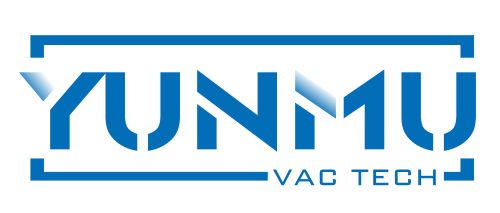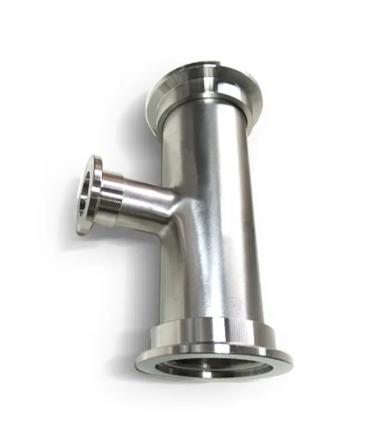Core Performance Metrics for Efficient Vacuum Pumps
Vacuum Level Requirements and Energy Consumption
Picking out the right vacuum pump starts with figuring out what vacuum level the job actually needs, because different applications call for different kinds of pumps and tech. Basically, vacuum level means how much pressure we want below normal air pressure, and this changes quite a bit from one situation to another. Take filtration systems for example they usually work fine with a medium strength vacuum. But when it comes to something like freeze drying food products, we need much deeper vacuums to get the job done properly. Going for higher vacuum levels does eat up more energy though, simply because creating and keeping those low pressure conditions takes extra power. Getting the vacuum level right makes all the difference in terms of saving money on electricity bills. Research indicates that matching vacuum settings accurately can cut down energy expenses by around 20%, which helps both the bottom line and overall system performance.
Flow Rate Considerations for Process Efficiency
The flow rate plays a major role in how well vacuum pump systems operate across different industries. Basically, it measures how much gas the pump moves through the system, which directly affects how fast and effectively vacuum processes work. Most applications need just the right amount of flow to get things done efficiently while avoiding unnecessary energy drain. Get this wrong and problems start piling up pretty quickly. We've seen cases where companies wasted thousands on energy bills because their pumps weren't matching what the actual process needed. Industry research shows that getting flow rates aligned properly with what the equipment actually requires can boost efficiency around 15 percent in many cases. Understanding this connection between flow settings and overall performance isn't just technical theory stuff. Real world operators know that taking time to calculate correct flow rates means better results and lower power costs in the long run.
Selecting Pump Technologies for Maximum Efficiency
Diaphragm Pumps vs. Rotary Vane: Efficiency Comparison
Picking between diaphragm pumps and rotary vane pumps really depends on what matters most for a particular application. Diaphragm pumps work by moving back and forth to push fluids around, which means no oil gets mixed into whatever's being pumped. That makes these great for labs or food processing where even tiny amounts of contamination could be a problem. On the other hand, rotary vane pumps have this solid build quality and can move much larger volumes quickly, though they usually need oil for lubrication. And sometimes that oil can end up mixing with whatever substance is passing through the pump, causing issues in some settings. Most folks in the pharmaceutical industry stick with diaphragm pumps because keeping things pure is absolutely essential there. Meanwhile, mechanics and factory workers tend to prefer rotary vane models when dealing with cars or heavy machinery since those situations demand raw power and fast pumping speeds. Some tests done at a manufacturing research facility showed that diaphragm pumps actually use roughly 30 percent less electricity than their rotary counterparts during low pressure operations. Over months and years, this difference adds up to meaningful cost reductions for businesses running multiple pumps all day long. At the end of the day, whether someone chooses one type over another really boils down to what aspects matter most for their particular setup energy bills, risk of contamination, or how much stuff needs to get moved per minute.
Advanced Features in Modern High-Efficiency Models
The latest generation of high efficiency vacuum pumps comes packed with new features that really boost both performance and save on power bills. Take variable frequency drives for instance these let the pumps change speeds depending on what the system actually needs at any given moment instead of running flat out all the time. And then there's the smart tech stuff too. These pumps can now monitor themselves in real time and spot problems before they become big headaches, cutting down on repairs and keeping operations going without interruption. We saw this work firsthand at one factory where switching to pumps with smart controls knocked their energy usage down by around 25% over just a few months. The bottom line is these improvements do more than cut costs they actually make the equipment last longer and run smoother, which explains why so many businesses are choosing them when trying to get good results while still being environmentally responsible.
Operational Factors Affecting Energy Usage
Optimizing Pumping Speed for Reduced Power Draw
Getting the most out of pumping speed helps cut down on electricity costs without compromising how well vacuum pumps work. Finding the sweet spot between pumping speed and energy use means matching the speed to what the production line actually needs at any given moment. This avoids wasting power while still keeping things running smoothly. Some companies analyze their system performance and run calculations to figure out exactly what flow rates they need for different operations. Take VACUUBRAND for example their systems come equipped with smart tech that adjusts pumping speeds automatically based on current conditions. When manufacturers customize these speeds according to their particular application requirements, they often see substantial drops in overall energy consumption across their facilities.
Smart Control Systems for Adaptive Performance
The latest smart control systems are changing how vacuum pumps perform because they work with real time data and adjust operations on the fly, which makes them much more energy efficient. What these systems do basically is cut down on wasted time when the pump isn't needed and respond faster when processes change, so the whole system runs better. Take for instance VACUUBRAND's VARIO® tech, where they vary motor speeds based on what the process actually needs at any given moment. This approach saves quite a bit of energy in practice. Research from various industrial settings shows energy consumption drops around 20% when these smart controls are implemented over traditional methods. For manufacturers looking to trim expenses without sacrificing performance, installing these kinds of control systems means getting maximum efficiency out of vacuum equipment while cutting down on those monthly utility bills significantly.
Sustainable Maintenance Practices for Long-Term Efficiency
Preventive Maintenance Schedules to Avoid Energy Waste
Regular preventive maintenance makes all the difference when it comes to keeping vacuum pumps running efficiently and extending their useful life. Companies that stick to scheduled maintenance see far fewer breakdowns and drops in performance, which means they don't waste as much energy trying to compensate for failing equipment. Maintenance records from various industries show similar results time after time. Industry professionals often point out that sticking to these schedules keeps vacuum systems performing at their best while cutting down on those frustrating unplanned shutdowns. Beyond saving energy costs, proper maintenance simply keeps equipment working longer, which is good business sense in the long run. Most plant managers will tell anyone who asks that money spent on routine checks pays itself back many times over in both energy savings and reduced replacement costs.
Oil-Free vs. Lubricated Systems: Maintenance Impact
Picking between oil free and lubricated vacuum systems makes a big difference when it comes to how much upkeep is needed and how well they actually work day to day. The oil free versions generally need less attention since there's no lubricant involved at all. No worrying about getting rid of used oil, no mess with environmental regulations, and definitely no need to keep replacing worn out lubricants over time. Lubricated models might perform better sometimes though, but they bring along their own headaches regarding proper disposal methods and extra costs for handling waste materials. Looking at real world situations shows this clearly enough. Many manufacturers who switched to oil free systems reported cutting down maintenance bills by quite a bit while also seeing improvements in energy consumption rates. So when shopping around for vacuum equipment, companies should really think about what kind of environment they're working in plus how often things will need fixing or replacing down the road.
FAQ
What is a vacuum level, and why is it important?
The vacuum level indicates the pressure level below the atmospheric pressure required for specific applications. It influences the type and technology of the vacuum pump needed and affects energy consumption.
How does flow rate affect vacuum pump efficiency?
The flow rate determines the volume of gas a pump can transfer. Selecting the right flow rate ensures efficient vacuum processes and minimizes energy waste.
What are the advantages of using diaphragm pumps over rotary vane pumps?
Diaphragm pumps offer clean, oil-free operation, suitable for sensitive applications, and consume less energy in low-pressure applications compared to rotary vane pumps.
What role do smart control systems play in vacuum pumps?
Smart control systems enhance energy efficiency by adjusting pump operations in real-time to meet process demands, reducing idle times and energy consumption.
What are the benefits of preventive maintenance schedules for vacuum pumps?
Preventive maintenance extends equipment lifespan, maintains performance efficiency, and reduces the risk of unexpected breakdowns and energy waste.

